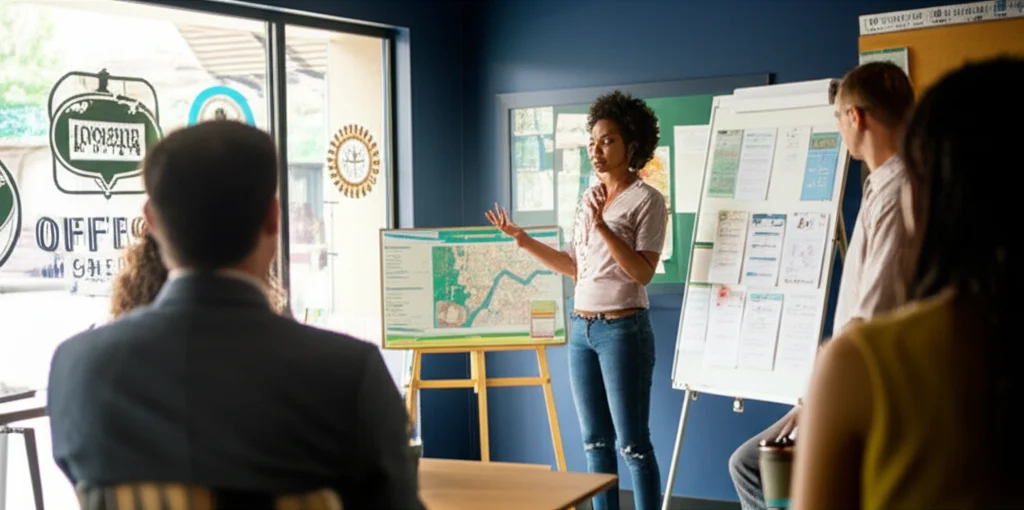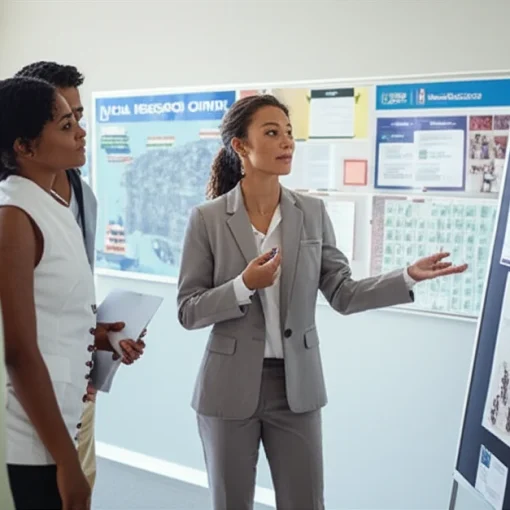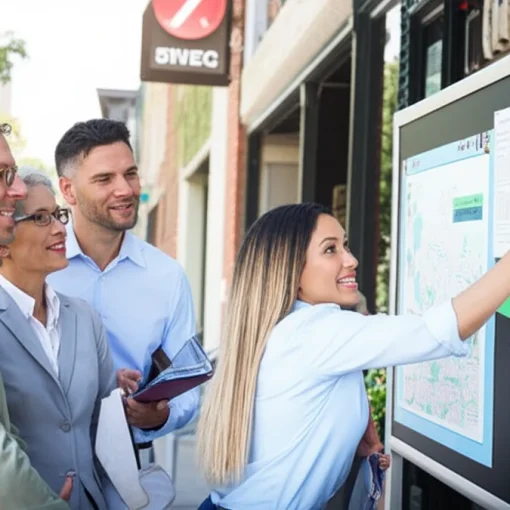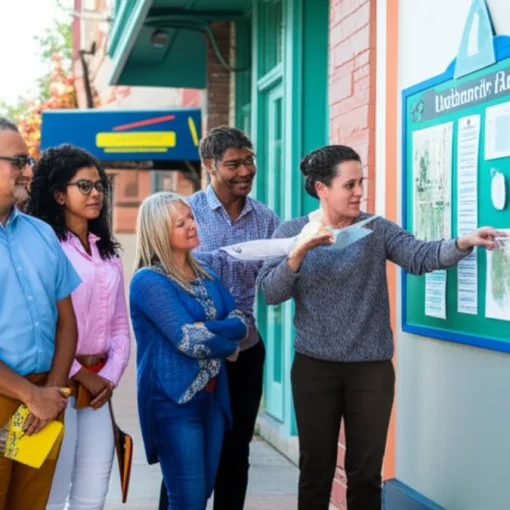Ever feel like growing your small business here in Wisconsin is like trying to push a boulder uphill, especially when you hit those moments where you need a little extra capital or expert advice, but just don’t know where to turn? It’s a common feeling, believe me. You hear whispers about state support programs, maybe the Wisconsin Economic Development Corporation (WEDC), but it all sounds a bit complicated, maybe even out of reach for a business like yours. Well, let’s pull up a chair and talk about it. Navigating the world of state economic development support doesn’t have to be a complete mystery, and understanding what the WEDC is, what kinds of programs they might offer, and how businesses actually qualify is the first big step toward potentially unlocking resources that could make a real difference for your bottom line and your ability to create jobs right here in the Badger State. We’ll dive into what they’re all about, touch on some of the program areas, and, crucially, discuss what it really takes to even get your foot in the door.
What Exactly is the WEDC?
So, what is the WEDC? Think of them as Wisconsin’s lead economic development agency. Their mission, put simply, is to promote organization growth, job creation, and overall economic prosperity across the state. They work with communities, regional partners, and businesses of all sizes. For years, I’ve seen them involved in everything from attracting huge manufacturing plants to helping a small startup find its footing. They’re funded by the state and they’re the central hub for a lot of the financial incentives and support programs designed to make Wisconsin a better place to do business and hire people.
Why Should a Wisconsin Small organization Care?
Now, you might be thinking, Okay, but I’m just a small shop, maybe me and a few employees. Is this really for me? And that’s a fair question. While WEDC does work on big, splashy projects, they absolutely have programs and resources aimed at smaller enterprises, either directly or through their extensive network of partners like the Small organization Development Centers (SBDCs) hosted at UW campuses, SCORE mentors, or regional economic development organizations. Why care? Because they can be a source of non-dilutive funding (meaning you don’t give up equity), tax credits that can lower your tax burden, or specialized expertise you couldn’t afford otherwise. It’s not free money, never think of it that way, but it’s potentially access to capital and resources you wouldn’t get through a traditional bank loan.
Navigating WEDC’s Support Programs: It’s Not One-Size-Fits-All
Okay, let’s talk programs. WEDC runs a bunch. And honestly, trying to list every single one would be like trying to count all the cows in Wisconsin – it’s overwhelming and the number changes! The key thing to understand is that these programs are usually targeted. They’re not a giant pot of money you just apply to for general business expenses. They’re tied to specific goals the state has.
Financial Support: Grants, Loans, and Tax Credits
This is often what gets businesses most excited. WEDC offers various types of financial assistance. You might find grant programs focused on things like brownfield remediation (cleaning up contaminated sites), community development projects that involve businesses, or sometimes programs tied to innovation or specific industry growth. Surprisingly, they also administer loan programs, which can sometimes have more flexible terms than traditional bank loans, and tax credits, which are basically reductions in your state tax liability for doing certain things, like creating jobs or investing in specific areas. Here’s a crucial point, and believe me, I’ve seen businesses miss this time and again: These financial programs almost always demand you to show a clear, measurable benefit back to the state, usually in the form of job creation or job retention. You’re not just getting money to keep the lights on; you’re getting money to grow and contribute to the state’s economy in a tangible way. I’ve seen businesses get tripped up here – they focus only on their need for cash, not on demonstrating the program’s impact through their project. Big mistake.
Beyond Funding: Technical Help and Exporting
It’s not just about the cash. WEDC also supports businesses through technical assistance, often delivered via those partners I mentioned – SBDCs, regional EDCs. This could be help refining your business plan, market research, financial projections, or even navigating regulatory hurdles. For businesses looking beyond the state borders, WEDC has strong export programs, helping companies attend trade shows, find international partners, and understand the complexities of selling globally. I’ve personally seen businesses unlock incredible new markets thanks to these export programs, it’s really cool stuff.
Who Qualifies? Understanding Eligibility
Alright, the big question: How do you qualify? And this is where I have to give you the expert, slightly frustrating answer: It depends. There’s no single, universal WEDC small enterprise grant application you fill out. Eligibility is tied specifically to each individual program, and those program details change based on state priorities, funding availability, and legislative direction.
The Shifting Landscape of Requirements
Think of it like this: The state identifies a need – maybe they want to boost manufacturing jobs in a certain region, or encourage businesses to adopt new technologies, or revitalize downtown areas. They’ll create a program with specific criteria designed to meet that need. So, a program for rural business development will have different requirements than one for high-tech startups in Madison or Milwaukee. What was available last year might be different this year. It keeps you on your toes, that’s for sure!
Common Eligibility Factors
That said, there are definitely common threads you’ll see across many programs potentially relevant to small businesses:
- Location, Location, Wisconsin! You absolutely must be a Wisconsin-based business, operating legally in the state. This one’s non-negotiable.
- Project Specificity: You need a clear, defined project. I need money to pay bills won’t cut it. I plan to purchase this specific piece of equipment to increase production by X%, allowing me to hire Y new employees, or I want to develop this new product prototype which will require Z R&D investment, now that’s a project.
- Job Creation/Retention: This is almost always a factor in financial programs. How many new jobs will you create? How many existing jobs will you retain because of this project? Be prepared to prove this. They often have specific wage requirements too, focusing on good-paying jobs.
- Financial Health: You generally need to show your business is viable and that you have the capacity to complete the project and potentially contribute matching funds. They’re investing in success, not propping up a failing venture. They’ll look at your financials, trust me.
- Industry/Focus: Some programs target specific industries (like manufacturing, technology, agriculture) or specific activities (like exporting, R&D). Make sure your enterprise and project fit the target.
- Community Impact: Many programs consider the broader impact of your project on the local community – think downtown revitalization, bringing life back to an area, supporting local suppliers.
Honestly, trying to guess if you qualify for an unnamed program is a waste of time. You need to find the specific program that might fit your project and then read its detailed guidelines. That’s the only way to know for sure.
The Application Process: More Than Just Filling Out Forms
Okay, so you think you’ve found a program that might fit. What’s next? The application process. And let me be blunt: It’s usually not simple. These are competitive state funds. You’ll typically need to submit a formal application that includes a detailed description of your project, a solid business plan or executive summary, comprehensive financial statements and projections, proof of matching funds (many programs require the business or other sources to cover a significant portion of the project cost), and detailed information about the jobs you plan to create or retain. The level of detail required can be intense. Think of it like applying for a significant bank loan, but with added focus on the public benefit. It often involves multiple steps: an initial inquiry, perhaps a formal application, a review process by WEDC staff and potentially an external committee – and then, if approved, a formal contract with reporting requirements to confirm you deliver on your promises (like creating those jobs!). This can take weeks, often months. So, applying for a WEDC program isn’t a quick fix for immediate cash flow problems. Not by a long shot. Planning ahead is absolutely crucial.
My Two Cents: Practical Advice for Navigating the WEDC Maze
Based on years of watching businesses navigate this world, here’s my unfiltered advice:
Do Your Homework
Seriously, this is the biggest one. Don’t just poke around the WEDC website blindly. Understand your own project goals first. Then, look for programs that specifically align with what you want to do. Is it equipment purchase for manufacturing? Is it R&D? Is it expanding your export market? Is it buying a building in a specific type of area? Use the WEDC website’s program finder or category filters, but be targeted. Applying for a program that’s only vaguely related is a guaranteed path to rejection and wasted effort. Read the program guidelines carefully – the devil really is in the details here.
Build Relationships
This might sound cheesy, but connect with people. Reach out to WEDC regional development directors or program managers. They are there to help explain things and guide you. Even better, connect with your local economic development professional or your SBDC consultant. These people are often on the front lines, know the programs inside and out, and can give you realistic feedback on whether your project is a good fit and help you polish your application. Trying to do this in a vacuum is really, really hard, and frankly, not smart. Leverage the network.
Be Patient and Persistent
As I said, this isn’t fast money. The review processes are thorough. Expect it to take time – potentially several months from initial contact to funding, if approved. And don’t get discouraged if you don’t get approved the first time, or if you learn a program isn’t the right fit for your current project. Learn from the experience, refine your project or approach, and look for other opportunities down the road.
Focus on Their Goals, Not Just Yours
Remember, WEDC programs are tools for the state to achieve economic development objectives. Your application needs to clearly articulate how your project helps them meet their goals, especially regarding job creation, capital investment, and economic impact. Frame your story in a way that resonates with their mission. I’ve seen otherwise solid projects fail because the applicant didn’t effectively communicate the broader public benefit – it sounded like they were just asking for money for themselves. Show the win-win. So, there you have it. The WEDC is a vital player in Wisconsin’s economic landscape, offering a range of potential support mechanisms for businesses, including small ones. It’s not a simple faucet of cash for everyone, and navigating the programs and eligibility requires effort, patience, and a willingness to understand the state’s economic development priorities. But for the right project, for businesses ready to grow and create jobs right here in Wisconsin, exploring what WEDC offers – either directly or through their partner network – is absolutely worthwhile. Do your homework, ask for help, and be realistic, and you might just find the support you need to take your Wisconsin business to the next level. Good luck!




